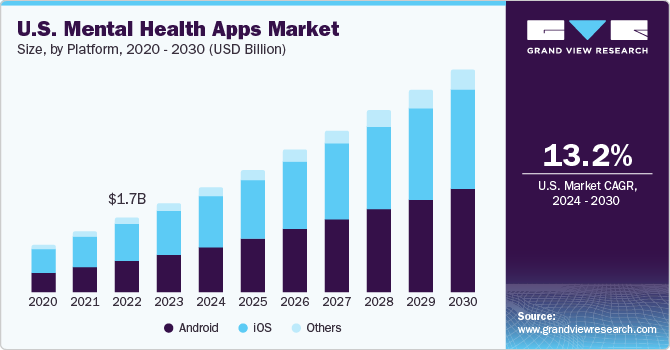The Rise of Mental Health Apps in the USA: A Comprehensive Overview
With a focused perspective, we explore the engaging issue related to The Rise of Mental Health Apps in the USA: A Comprehensive Overview. Let’s offer new information and provide readers with fresh insights.
Video about The Rise of Mental Health Apps in the USA: A Comprehensive Overview
The Rise of Mental Health Apps in the USA: A Comprehensive Overview

Mental health has become a pressing concern in the United States, with millions of Americans struggling with anxiety, depression, and other mental health conditions. The need for accessible, affordable, and convenient mental health resources has never been greater. In recent years, mental health apps have emerged as a popular solution, offering users a wide range of tools and services to manage their mental well-being. In this article, we will explore the growth of mental health apps in the USA, their benefits and limitations, and the key players in the market.
The Prevalence of Mental Health Issues in the USA
Mental health issues are a significant public health concern in the United States. According to the National Institute of Mental Health (NIMH), in 2020, an estimated 47.6 million adults in the United States experienced a mental illness. This represents approximately 19.6% of the adult population. The most common mental health conditions in the USA are:
- Anxiety disorders (affecting 31.1% of the adult population)
- Major depressive disorder (affecting 7.1% of the adult population)
- Attention deficit hyperactivity disorder (ADHD) (affecting 4.4% of the adult population)
The prevalence of mental health issues in the USA is exacerbated by the lack of accessible and affordable mental health resources. Many individuals face significant barriers to accessing traditional mental health services, including:
- Cost: Mental health services can be expensive, with many individuals struggling to afford the high costs of therapy and medication.
- Access: Mental health services may not be readily available in all areas, particularly in rural communities.
- Stigma: The stigma surrounding mental health issues can prevent individuals from seeking help.
The Emergence of Mental Health Apps
Mental health apps have emerged as a promising solution to address the growing need for accessible and affordable mental health resources. These apps offer a range of tools and services, including:
- Mood tracking and monitoring
- Cognitive-behavioral therapy (CBT) and other evidence-based therapies
- Meditation and relaxation techniques
- Social support networks
- Access to licensed therapists and counselors
Mental health apps have several benefits, including:
- Convenience: Mental health apps can be accessed anywhere, at any time, providing users with a convenient and flexible way to manage their mental health.
- Accessibility: Mental health apps can reach individuals in areas where traditional mental health services may not be readily available.
- Affordability: Mental health apps can be more affordable than traditional mental health services, with many apps offering free or low-cost access to resources.
- Anonymity: Mental health apps can provide users with a sense of anonymity, which can be particularly beneficial for individuals who may be hesitant to seek help due to stigma or personal concerns.
Closure
We hope this article has provided a clearer view on The Rise of Mental Health Apps in the USA: A Comprehensive Overview. We hope you found this article valuable. See you again in our upcoming article!.